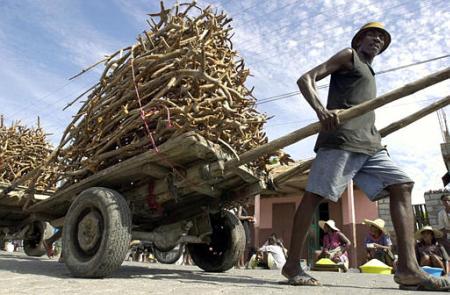 |
| An unidentified Haitian man pulls a cart piled with sticks of wood in the
Raboteau neighborhood of Gonaives, 60 miles (97 kilometers) northwest of Port-au-Prince,
Haiti, Wednesday, Aug. 7, 2002. A relative calm prevailed in the streets of Gonaives on
Wednesday, two days after violent protests calling for the ouster of President
Jean-Bertrand Aristide.(AP Photo/Andres Leighton) |
|
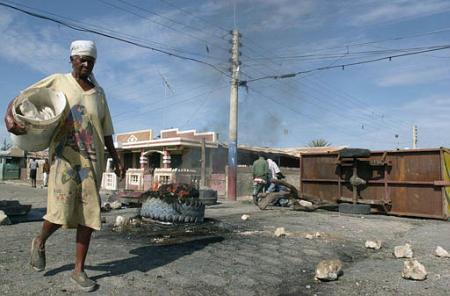 |
|
|
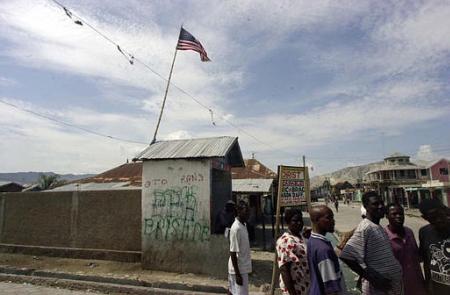 |
| An American flag flies over the Raboteau neighborhood of Gonaives, Haiti,
Tuesday, Aug. 6, 2002, four days after the Cannibal Army broke into a Gonaives prison. In
a sign of growing lawlessness, police in Gonaives have been unable to quell violence that
began Friday when the armed supporters of a formerly pro-Aristide street gang crashed a
stolen tractor into a prison, freeing 159 inmates. (AP Photo/ Daniel Morel) |
|
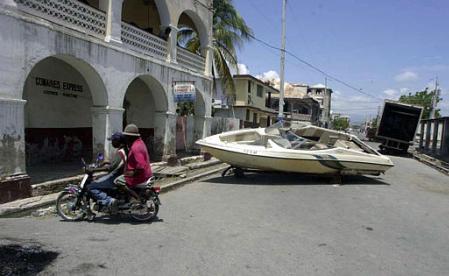 |
| A speedboat serves as a barricade at the limit of the Raboteau
neighborhood of Gonaives, Haiti, Tuesday, Aug. 6, 2002. Raboteau residents and the
Cannibal Army erected barricades at all the entrances to the neighborhood on Monday, three
days after they broke into the prison by crashing a stolen tractor into the prison,
freeing 159 prisoners. (AP Photo/ Daniel Morel) |
|
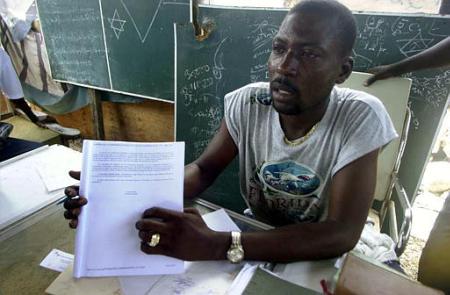 |
| Kerby Sainterling, community leader of the Raboteau neighborhood of
Gonaives, complaining about the interference of the Organization of American States (OAS)
in Haitian affairs as he holds up a copy of the OAS report on the December 17, 2001,
attack on the National Palace, in Gonaives, Haiti, Tuesday, Aug 6, 2002. (AP Photo/ Daniel
Morel) |
|




